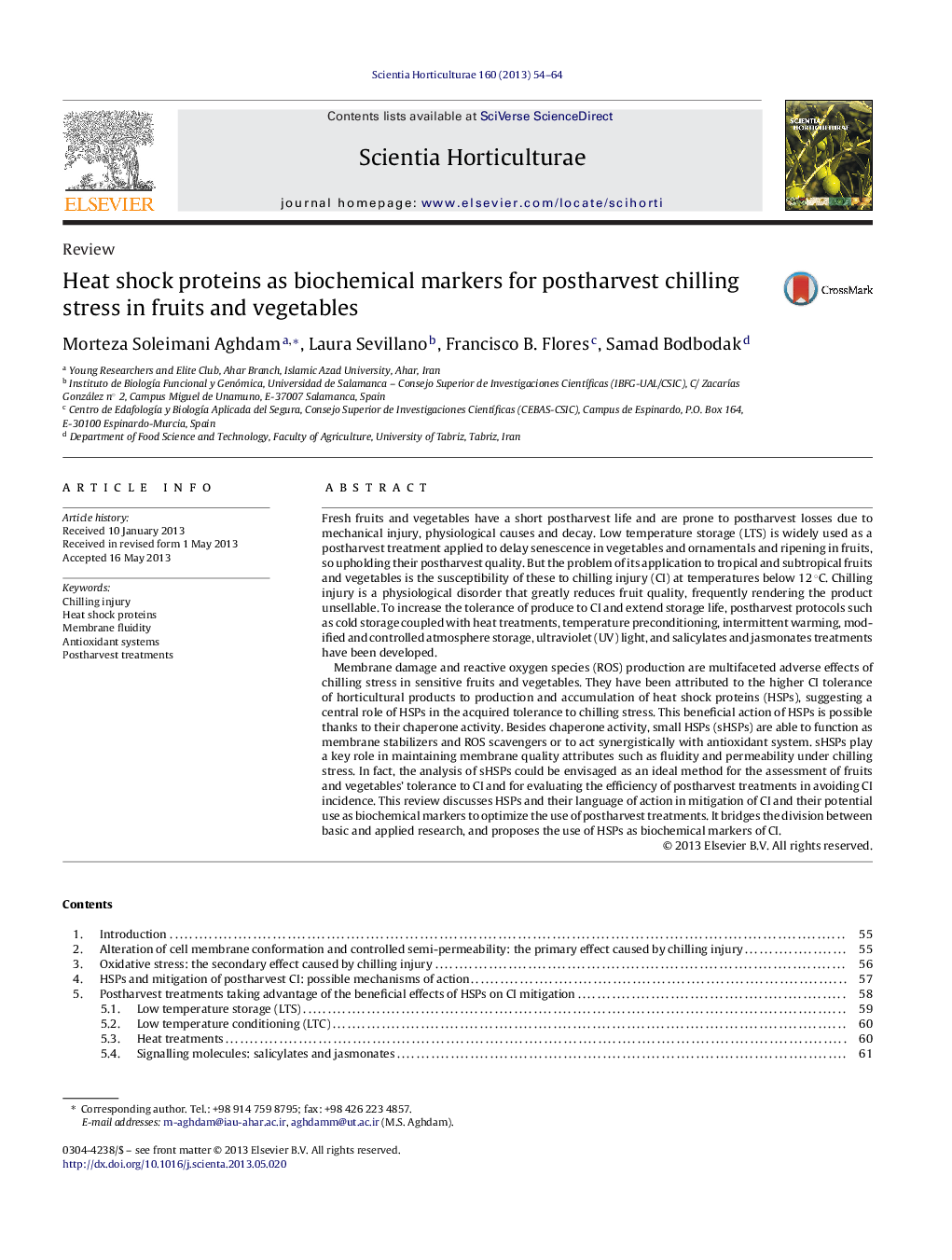| Article ID | Journal | Published Year | Pages | File Type |
|---|---|---|---|---|
| 4566954 | Scientia Horticulturae | 2013 | 11 Pages |
•HSPs play pivotal roles in chilling tolerance acquisition in fruits and vegetables.•Beneficial action of HSPs is possible thanks to their chaperone activity.•sHSPs are crucial for maintaining membrane quality attributes under chilling stress.•sHSPs have ability to act synergistically with ROS scavenging system.•HSPs can be used as biochemical markers to optimize the use of postharvest treatments.
Fresh fruits and vegetables have a short postharvest life and are prone to postharvest losses due to mechanical injury, physiological causes and decay. Low temperature storage (LTS) is widely used as a postharvest treatment applied to delay senescence in vegetables and ornamentals and ripening in fruits, so upholding their postharvest quality. But the problem of its application to tropical and subtropical fruits and vegetables is the susceptibility of these to chilling injury (CI) at temperatures below 12 ̊C. Chilling injury is a physiological disorder that greatly reduces fruit quality, frequently rendering the product unsellable. To increase the tolerance of produce to CI and extend storage life, postharvest protocols such as cold storage coupled with heat treatments, temperature preconditioning, intermittent warming, modified and controlled atmosphere storage, ultraviolet (UV) light, and salicylates and jasmonates treatments have been developed.Membrane damage and reactive oxygen species (ROS) production are multifaceted adverse effects of chilling stress in sensitive fruits and vegetables. They have been attributed to the higher CI tolerance of horticultural products to production and accumulation of heat shock proteins (HSPs), suggesting a central role of HSPs in the acquired tolerance to chilling stress. This beneficial action of HSPs is possible thanks to their chaperone activity. Besides chaperone activity, small HSPs (sHSPs) are able to function as membrane stabilizers and ROS scavengers or to act synergistically with antioxidant system. sHSPs play a key role in maintaining membrane quality attributes such as fluidity and permeability under chilling stress. In fact, the analysis of sHSPs could be envisaged as an ideal method for the assessment of fruits and vegetables’ tolerance to CI and for evaluating the efficiency of postharvest treatments in avoiding CI incidence. This review discusses HSPs and their language of action in mitigation of CI and their potential use as biochemical markers to optimize the use of postharvest treatments. It bridges the division between basic and applied research, and proposes the use of HSPs as biochemical markers of CI.
